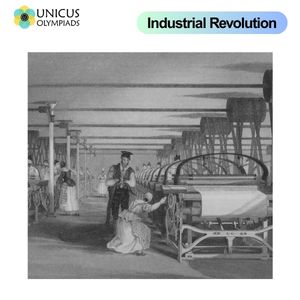

The Industrial Revolution, which began in the late 18th century and continued into the 19th century, was one of the most transformative periods in human history. It marked a shift from agrarian economies to industrialized and urbanized societies. The changes brought about by the Industrial Revolution affected every aspect of life, from the economy and work to social structures, technology, and even politics. In this article, we will explore the major changes that came from the Industrial Revolution and how they shaped the modern world.

Before the Industrial Revolution, most economies were based on agriculture, craftsmanship, and small-scale trade. However, the rise of factories, mass production, and mechanized labor shifted the economic focus toward industrial capitalism. The development of industries such as textiles, iron, and coal mining created new opportunities for wealth and economic growth, particularly for factory owners and industrialists.
The demand for factory workers led to the rapid growth of cities. As rural populations migrated to urban centers in search of work, cities expanded at an unprecedented rate. The shift from rural farming communities to urban industrial centers is one of the most profound consequences of the Industrial Revolution.
The Industrial Revolution was characterized by a wave of technological innovations that transformed industries and daily life. Key inventions such as the steam engine, mechanized looms, and the spinning jenny revolutionized production processes, making them faster, more efficient, and less reliant on human or animal labor.
Transportation underwent a revolution during the Industrial Revolution, enabling faster movement of goods and people, which in turn helped boost economic growth and connect distant regions.
The Industrial Revolution drastically changed the nature of work. Prior to industrialization, most people worked in agriculture or as artisans, with a focus on small-scale production. The rise of factories, however, brought about a new form of work organization—factory labour. Workers were required to work long hours under strict conditions for low wages, and many factory owners exploited their labour force, especially women and children.
Although urbanization led to overcrowding and poor living conditions for many workers, the long-term effects of industrialization gradually improved living standards for much of the population. Innovations in medicine, public health, and sanitation helped reduce diseases, while mass-produced goods became more affordable to a larger portion of society.
The Industrial Revolution also brought about political changes. As the new industrial elite grew wealthier, they began to challenge the traditional aristocracy and monarchy, leading to the growth of new ideologies and political movements. Many of these ideologies were focused on workers' rights, equality, and the role of the state in managing industrialization.
While the Industrial Revolution brought many advancements, it also had significant negative effects on the environment. The rapid expansion of factories, the increased use of coal and steam power, and the growth of cities led to widespread environmental degradation.